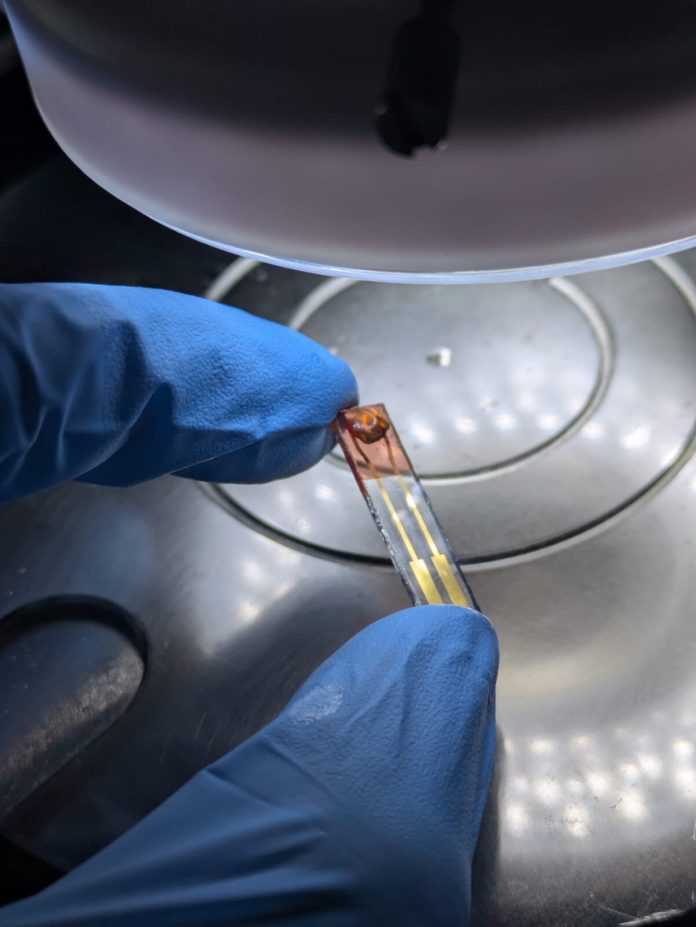
Scientists have created a new kind of artificial vision system that is energy-efficient and recyclable, using honey as an electrolyte.
This breakthrough could help reduce electronic waste while improving the performance of smart technology.
Researchers from the University of Glasgow, São Paulo State University (UNESP), and Hong Kong Metropolitan University worked together to design this innovative system.
It mimics the way the human brain processes and remembers colors, requiring very little energy to function.
The system is called an Electrolyte-Gated Organic Field-Effect Transistor (EGOFET).
Unlike traditional computer chips that separate processing and memory storage, EGOFET combines sensing light, processing information, and storing memory all in one device. Even when switched off, it can retain the information—a feature known as non-volatility.
This efficient design makes EGOFET ideal for real-world applications like self-driving drones and smart security systems, which require fast processing of visual information.
Many current artificial vision systems use silicon-based sensors, which need a lot of power and computing resources. The EGOFET system improves on this by reducing energy use and eliminating the need for large computing power.
Dr. Theodoros Serghiou from the University of Glasgow’s James Watt School of Engineering led the development. He explained, “In traditional computers, processing and memory are separate, causing delays. Our device performs these functions together, like synapses in the brain, making it much more efficient.”
The researchers built their prototype EGOFET on a glass base, using gold electrodes, a light-sensitive organic layer called perylene, and a thin layer of honey as an electrolyte. The system detects light and produces small electric signals, allowing it to program and store memory states even when turned off.
Because of this design, the EGOFET only requires 2.4 picojoules of energy per event, making it one of the most energy-efficient vision devices ever created. In comparison, traditional CMOS imaging systems use millions of times more energy.
Professor Jeff Kettle, a co-author from the James Watt School of Engineering, highlighted the impact of this research. “Our device mimics brain-like behaviors, such as learning and memory, with remarkable accuracy. This technology could improve artificial vision, neuromorphic computing, and energy-efficient electronics.”
The next step is to develop EGOFET arrays for enhanced image recognition, making it even more useful for artificial vision applications.
When the device reaches the end of its life, the researchers expect the glass and gold parts to be recycled, while the organic components, including the honey, will biodegrade naturally.
This breakthrough in sustainable technology could lead to smarter, greener, and more efficient artificial vision systems in the future.



